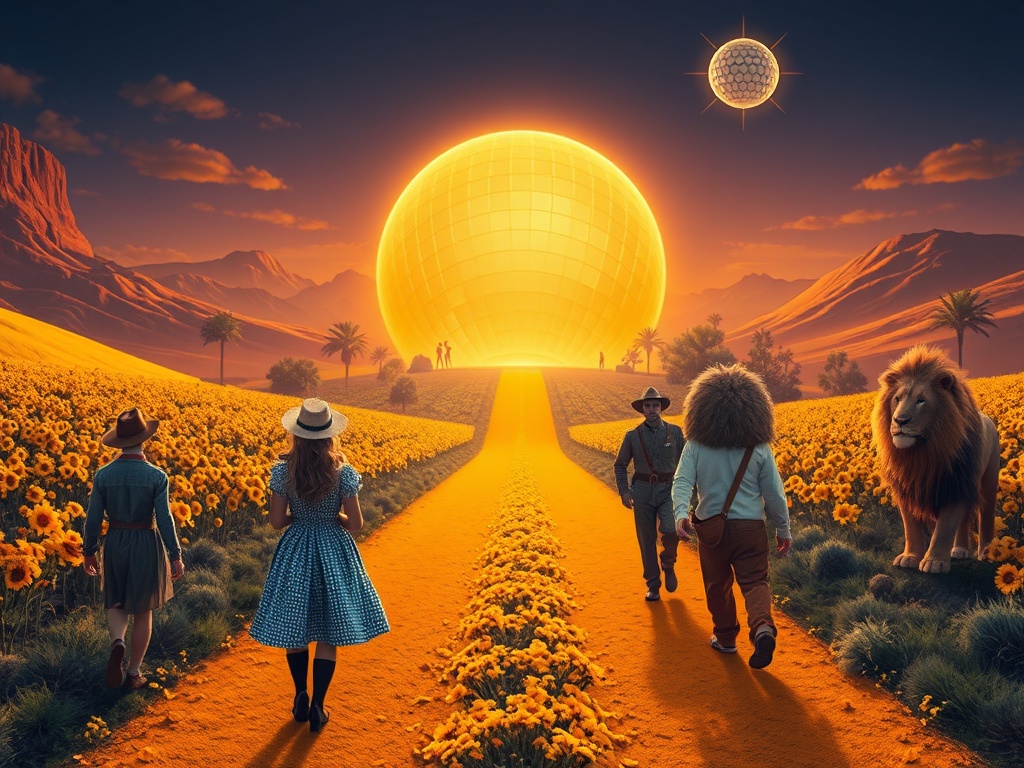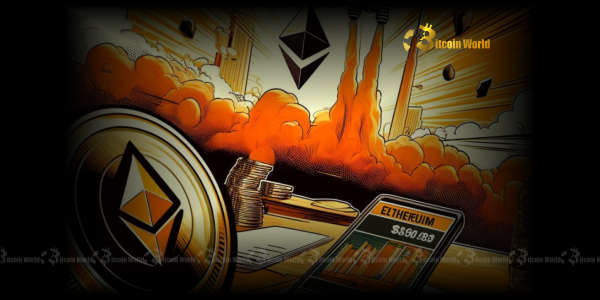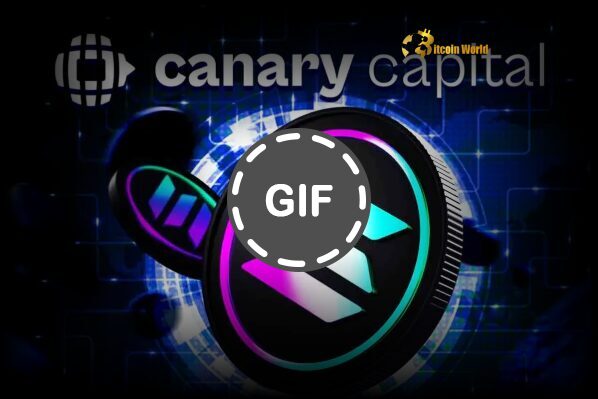BitcoinWorld

AI in Entertainment: Wizard of Oz Gets a Dazzling Transformation for Sphere Las Vegas
The convergence of artificial intelligence and entertainment is reaching new heights, promising experiences that transcend traditional viewing. For enthusiasts keenly following the evolution of technology and its impact on digital assets, the latest development at the iconic Sphere in Las Vegas offers a fascinating glimpse into the future. Imagine a beloved classic like ‘The Wizard of Oz’ not just projected, but reimagined and expanded by AI for a colossal screen. This isn’t merely a film screening; it’s a groundbreaking venture that demonstrates the immense potential of AI in entertainment to redefine how we consume media.
What is AI in Entertainment Doing to Classic Films?
The Sphere, Las Vegas’s massive spherical venue, is set to screen its first classic movie, “The Wizard of Oz,” starting August 28. This is no ordinary projection. Sphere Entertainment CEO James Dolan revealed a 2,000-person team is creating a new experience. This extensive effort involves using AI to both increase the resolution of the existing film and expand the footage beyond its original frame. This process aims to integrate viewers into the film, rather than simply modifying it. It represents a significant leap in how archival content can be presented.
The Grand Vision of Sphere Las Vegas
The Sphere is an architectural and technological marvel, boasting a 160,000 square foot, wraparound LED screen. Its design allows for truly enveloping visual presentations. Screening a classic film like ‘The Wizard of Oz’ at such a venue is a statement. It signals a new era for cinematic experiences, moving beyond standard theaters. The Sphere’s capabilities suggest a future where entertainment is not just watched but felt, offering audiences unparalleled immersion. This venue is quickly becoming a benchmark for large-scale digital displays and event hosting, setting a high standard for future entertainment complexes.
Unveiling the Magic: How Wizard of Oz AI Redefines Viewing
The core of this project lies in advanced AI techniques. As explained by Turner Classic Movie presenter Ben Mankiewicz, AI transforms a grainy close-up of Dorothy into a richly detailed image. More remarkably, a process called ‘outpainting’ extends the visual world beyond the original frame. This means viewers might suddenly see the rest of the Scarecrow, the Yellow Brick Road continuing, and the distant mountains of Oz, all generated by AI to match the original aesthetic. In some instances, this expansion even involves creating new performances from existing actors, carefully crafted to maintain the film’s integrity. Dolan emphasized that the goal was not to alter the film, but to make viewers feel present during its original shooting, an ambitious aim for Wizard of Oz AI.
Key AI techniques involved include:
- Resolution Enhancement: AI algorithms upscale lower-resolution footage, adding detail and clarity that wasn’t possible with original film stock.
- Outpainting: Generative AI expands the image beyond its original borders, intelligently filling in missing visual information based on context.
- Frame Expansion: This involves creating new elements or extending existing ones to fit the Sphere’s unique aspect ratio, sometimes generating new character movements or backgrounds.
Beyond Restoration: The Future of Classic Movie Restoration
This project at the Sphere has profound implications for classic movie restoration. It opens up possibilities for bringing countless archival films to modern audiences in ways previously unimaginable. Instead of just cleaning up old prints, AI can actively enhance and expand them for new viewing platforms. This could breathe new life into cinematic history, making it accessible and engaging for generations accustomed to high-definition and immersive content. However, it also raises questions about artistic intent and the authenticity of modified works, prompting a careful balance between innovation and preservation. The success of ‘The Wizard of Oz’ at the Sphere could pave the way for a new industry standard in film re-mastering.
Are We Ready for Truly Immersive Experiences?
The ‘Wizard of Oz’ screening at the Sphere is more than just a technological feat; it’s a significant step towards truly immersive experiences. For those interested in the metaverse, virtual reality, and augmented reality, this project offers a tangible example of how digital environments can envelop users. It highlights the potential for content creators and studios to think beyond flat screens, designing narratives that utilize expansive, multi-sensory environments. This shift demands new creative approaches and technological infrastructure, impacting everything from film production to digital asset creation. As technology continues to advance, our expectations for entertainment will undoubtedly evolve, pushing the boundaries of what is possible and driving demand for increasingly engaging content platforms.
In conclusion, the AI-powered transformation of ‘The Wizard of Oz’ for the Sphere in Las Vegas marks a pivotal moment in entertainment. It showcases AI’s capacity to not only enhance but also expand beloved classics, offering audiences an unprecedented level of immersion. This project underscores the growing synergy between artificial intelligence and media, pointing towards a future where technology seamlessly integrates with storytelling to create truly unforgettable experiences. As we look ahead, the innovations demonstrated at the Sphere will undoubtedly inspire further advancements in how we consume and interact with digital content.
To learn more about the latest AI in entertainment trends, explore our article on key developments shaping AI models and their features.
This post AI in Entertainment: Wizard of Oz Gets a Dazzling Transformation for Sphere Las Vegas first appeared on BitcoinWorld and is written by Editorial Team





